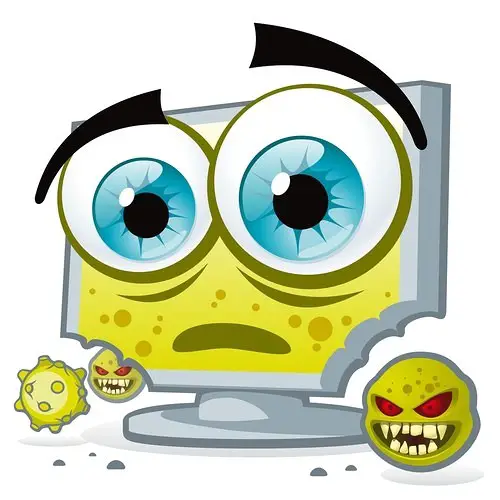Spyware Malware and Viruses
The objective on this part of our IT Training is to teach you all about computer infections…and how you remove them.
So first of all let’s start by clearing up an important point.
What is the difference between spyware, malware and viruses?
A common question. There are so many terms floating about that it’s easy to become confused. But let me tell you what I always say to my clients when I am explaining why their computer behaves erratically and keeps asking for their bank details: “Forget anything else – call it Malware for simplicity.”

Why? Because Malware encompasses all computer infections.
What does malware mean?
Most sources site the word malware as meaning “Malicious Software”. It refers to software that has been written with the intent to cause some form of harm to your computer or network.
Malware is the phrase that I and the technicians that I work with tend to use on a daily basis and before I explain why, let’s look at the different types of infection you are likely to hear about:
Virus – This is a program that once will often self-replicate by infecting other programs and files on your computer with the intent of causing harm. The outcome of a virus is usually referred to as the ‘payload’. This damage can range from a complete ‘denial of use’ of your computer, wiping your hard drive or making any aspect of your computer behave in a way that it shouldn’t although viruses have been known to carry out simple tasks such as reset your clock. In our opinion here at TekMoz the word virus is quite an old fashioned word that was mostly applicable to computers in the 1990’s and early 2000’s as it tends to only affect the local computer. Most computer infections these days tend to come from the Internet and are designed in a much more complicated way. Modern infections have self preservation built in and will hide themselves from a lot of virus removal
Trojan – Think of the Trojan Horse story. A seemingly innocent gift that when opened causes mayhem. Trojans are a popular way for Malware to penetrate computer systems.
Spyware – Think of spyware like this:- it is software that collects information about your internet usage and sends it back to the place it was created. This information is often used against you in the form of spam. This process of information sending uses up your bandwidth resulting in a slower performance.
Adware – Annoying pop up adverts. These are usually accompanied by a change in your homepage. Not all adware are infections but are designed to make you click and buy (or give your credit card details away!)
Backdoor – These are ways that a hacker may penetrate a computer system. Typical examples are hidden computer accounts or router ports left open that a hacker may use without your knowledge. Some IT companies have legitimate backdoors as part of a company disaster recovery strategy but do not advertise them or have ways of activating them when required.
Dialler – A program that typically dials a premium rate number that has per minute charges, usually at a high rate than your average call resulting in a hefty bill.
Hijackers – Hijackers are designed to change aspects of your Internet functions such as redirecting your search engine results or your home page to show results that will somehow benefit the creators of the hijack program.
Worm – Usually found in attachments to rogue emails. Programmed that when run, has the ability to spread to other computers on its own using either mass-mailing techniques to email addresses found on your computer or by using the Internet to infect a remote computer using security flaws.
How do computer viruses or spyware (ahem)… Malware start? How do i get infected?
Malware spreads via email, USB stick or websites dropping bad code onto your computer. They are then triggered by something. Usually this trigger will be a program such as Internet Explorer starting up or a file attachment being opened. The symptoms of a malware attack may not always be obvious straight away until you start a program or a website or insert a memory stick and then…you experience the payload of the malware.
How to get ride of viruses / spyware / malware infections
Over 20 years of fighting computer infections have led me to believe that there are basically 3 ways to get rid of an infection regardless of which virus or malware it is, these are:
Automated virus and malware removal
Semi-Automated virus and malware removal
Manual virus and malware removal
Let’s look at each of these in turn…
